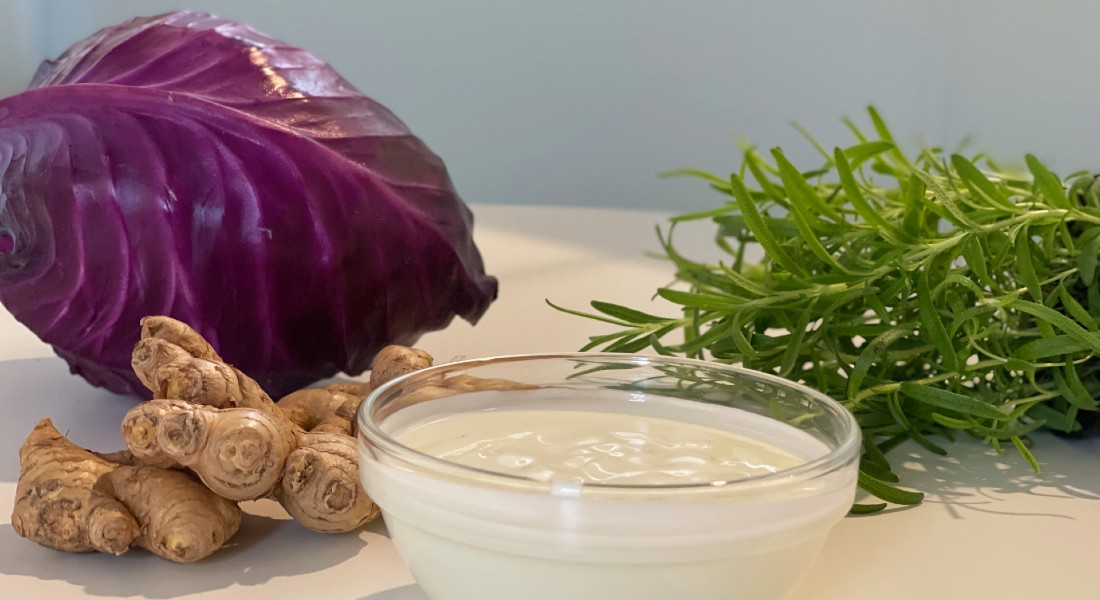Researchers will study the structures of food at the atomic level through a new Danish-Swedish collaboration
Why is yoghurt so silky smooth and delicious and how do you achieve the same consistency using plant-based components? Researchers from the Department of Food Science can investigate this through a new collaboration between the Universities of Copenhagen and Lund.

The international investments in MAX IV and the upcoming ESS in Lund in Sweden provide the opportunity for research and educational collaborations to decode the nanostructures in food. That is why the Department of Food Science at the University of Copenhagen (UCPH FOOD) has entered into a cooperation agreement with Lund University to exchange knowledge as well as research and training in food materials. The agreement also includes the Niels Bohr Institute, as both in-depth knowledge of fundamental X-ray and neutron physics as well as actual food science is needed to be able to interpret the data from the experiments.
“With MAX IV and the upcoming ESS, we have the luxury of being very geographically close to some fantastic research infrastructures that can look deeply into the smallest components of food. We must take advantage of that opportunity and we are doing so with this collaboration,” says Head of UCPH FOOD, Anna Haldrup.
The structure of a food is important for whether we want to eat it. There are probably not many people who would enjoy a soft apple, a tough slice of cheese or a chocolate royal with a hard filling. And if we can come to understand the tastiest structures in food at the nano level (molecules and atoms), it is a big step on the way to be able to imitate them.
“For example, we lack knowledge about the structure of plant-based foods, which we need as we want to produce many more plant-based products and ingredients. And at the same time, we need more knowledge about nanostructures in known raw materials and ingredients – both with a view to creating even better existing products, as well as imitating some of the structures that have worked for us for many years, in order to transfer them to plant-based foods,” says Anna Haldrup.
A new angle on food
Food can be processed in many different ways and researchers can design foods where they put the food’s components, e.g., fats and proteins, together in ways that are appropriate in terms of taste, health and sustainability.
At the moment, the researchers at UCPH FOOD can examine which substances are found in the food.
“With access to MAX IV and the upcoming ESS in Lund, we will also be able to investigate where in the food the various substances are located and how they form the networks and structures that hold the food together and give the special mouthfeel, which is part of the overall taste experience,” says UCPH Associate Professor Jens Risbo, who is part of a strategy group for the collaboration with Lund University.
This means that desirable structures mat be imitated in new, sustainable products that can become part of a more climate-friendly food supply.
How MAX IV and ESS in Lund, Sweden, reveal the structure of materials
- MAX IV is a synchrotron – a super-intense X-ray light source that can be used to examine the structure of materials.
-
ESS (European Spallation Source) will, when the facility is completed, be an intense neutron source, which is also used for studying the structure of materials. Neutrons interact with the atoms of materials in a completely different way than X-rays, and this provides other possibilities. For example, neutrons can easily penetrate steel, which is almost impermeable to X-rays.
-
Both neutrons and X-rays can be used in different ways. Crystals can be examined with diffraction, by which the exact position of atoms in, for example, a protein can be determined. Scattering techniques provide information about the nanostructure in soft, more disordered materials such as foods and other biological system. Neutron and X-ray imaging provide insight into the 3D structures of materials using principles similar to those used in scanners in hospitals.
When ESS is ready, a data center at the University of Copenhagen, the ESS Data Management and Software Centre (DMSC), will store, process and help visiting researchers analyse and interpret the data from the experiments at the ESS facility in Lund.
UCPH FOOD collaborates with the Niels Bohr Institute
The X-ray and neutron facilities have traditionally been used for hard crystalline materials but are now also widely used to examine soft materials (soft matter), such as food. Materials research has been upgraded in recent years at UCPH FOOD by utilising these techniques for food research.
“We have employed a physicist, Jacob Kirkensgaard, who works both with us and the Niels Bohr Institute, because collaboration between physicists and food scientists is important for the full understanding of the food structures and their impact on the quality of the food. Through the research infrastructure FOODHAY, we have also invested in local laboratory scale X-ray equipment that can be used for research into soft materials,” explains Anna Haldrup.
This equipment can be used by both students and researchers as well as companies. Read an article about UCPH FOOD’s Nano-inXider for Small Angle X-ray Scattering.
UCPH FOOD also collaborates with the Department of Drug Design and Pharmacology at the University of Copenhagen, which has even more specialised equipment for X-ray examinations at the nanoscale and will be the last step before further studies at MAX IV and the upcoming ESS.
The cooperation agreement applies from 1 July 2022 and will run for four years until 1 July 2026.
Read about the strategy for the Danish utilisation of the neutron scattering facility ESS (European Spallation Source) on the Ministry of Higher Education and Science’ website.
Contact
Head of the Department of Food Science at the University of Copenhagen (UCPH FOOD) Anna Haldrup,
Associate Professor at the UCPH FOOD Jens Risbo,
Or
Communications Officer at UCPH FOOD Lene Hundborg Koss, lene.h.koss@food.ku.dk
